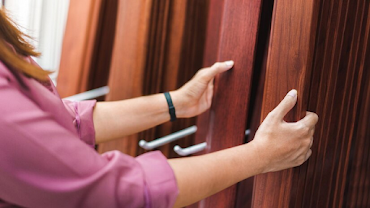Exploring the Versatility of Louver Doors: Aesthetics and Airflow Combined
Introduction:
Louver doors are a popular choice for homeowners and interior designers looking to combine aesthetics with functionality. These versatile doors feature slats or louvers that allow for increased airflow, privacy, and visual appeal. This comprehensive guide explores the benefits and applications of louver doors, their design options, and the considerations to keep in mind when incorporating them into your space.
The Benefits of Louver Doors:
Improved Airflow:
Louver doors offer excellent ventilation capabilities. The slats or louvers allow for the passage of air, promoting better airflow between rooms or within enclosed spaces. This can be particularly advantageous in areas where proper ventilation is necessary, such as laundry rooms, closets, or utility spaces.
Privacy and Light Control:
Louver doors provide privacy while allowing natural light to filter through. The slats can be adjusted to control the amount of light entering the room, offering flexibility and creating a pleasant ambiance. Additionally, louver doors allow for airflow while still maintaining a level of privacy.
Space Optimization:
Louver doors are a space-saving solution as they do not require extra clearance for swinging like traditional hinged doors. This makes them ideal for areas with limited space or where maximizing usable floor area is important.
Aesthetics and Design Flexibility:
Louver doors add a touch of visual interest to any space. They come in a variety of designs, styles, and materials, allowing for customization to suit different interior themes and personal preferences. Whether you prefer a contemporary, traditional, or rustic look, there is a louver door option to complement your desired aesthetic.
Design Options for Louver Doors:
Material Selection:
Louver doors are available in various materials, each with its own unique characteristics and visual appeal. Common options include:
a. Wood: Wooden louver doors offer a warm and natural look. They can be stained or painted to match the existing décor and provide a classic, timeless aesthetic.
b. Composite: Composite louver doors combine wood particles and synthetic materials. They offer durability and resistance to warping or cracking, making them suitable for areas with high humidity.
c. Metal: Metal louver doors provide a contemporary and industrial look. They are often used in modern or minimalist designs and offer strength and longevity.
Louver Orientation and Size:
Louver doors come in various configurations, including vertical or horizontal louvers, and different sizes of slats. The orientation and size can impact the overall aesthetic and functionality of the door, allowing for customization to suit specific design preferences and airflow requirements.
Applications of Louver Doors:
Closets and Wardrobes:
Louver doors are commonly used in closets and wardrobes. The slats provide ventilation to prevent musty odors and allow airflow to keep clothes fresh. Additionally, the louvers offer a glimpse of the contents while maintaining privacy.
Laundry Rooms:
Proper ventilation is crucial in laundry rooms to prevent the buildup of moisture and unpleasant odors. Louver doors facilitate air circulation, helping to keep the space fresh and preventing the growth of mold and mildew.
Utility and Mechanical Rooms:
Louver doors are ideal for utility and mechanical rooms, such as water heaters, air conditioning units, or fuse boxes. The slats allow for airflow to prevent equipment overheating while maintaining a level of privacy and accessibility for maintenance purposes.
Interior Dividers and Partitions:
Louver doors can be used as interior dividers or partitions to separate spaces while still allowing light and airflow to flow through. This is particularly useful in open-concept living areas or offices where creating defined zones is desired.
IV. Maintenance and Care:
Cleaning:
Regular dusting or vacuuming of the louvers is necessary to prevent the buildup of dust and debris. Use a soft brush attachment or a damp cloth to gently wipe the slats, taking care not to damage or bend them.
Lubrication:
If your louver doors have hinges or moving parts, periodic lubrication with a suitable lubricant will ensure smooth operation and prevent squeaking.
Conclusion:
Louver doors offer a unique combination of aesthetics, functionality, and airflow control. Their ability to promote ventilation, provide privacy, and add visual interest makes them a versatile choice for various applications in residential and commercial spaces. Whether used in closets, laundry rooms, or as interior dividers, louver doors offer an elegant solution to enhance the overall aesthetics and functionality of any space.




Comments
Post a Comment